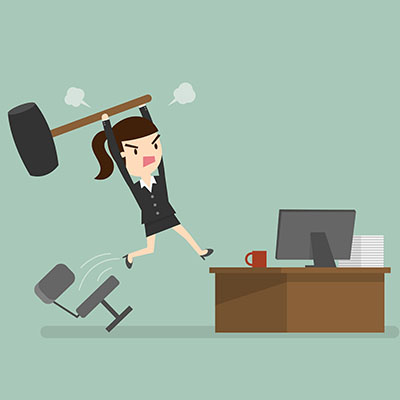
Sometimes it might be tempting to just smack your computer to make it work appropriately, and while it’s often a joke that this can fix the problem, it’s not something that we would recommend you get used to doing. Let’s discuss why it might not be a good idea to abuse your computer.
Repair-via-Violence is Sometimes Referred to as Percussive Maintenance
Yes, there is an actual term for hitting your technology to make it work. According to Techopedia, the definition is as follows:
“In IT, percussive maintenance is the art of shaking, banging or pounding on something, in order to make it work. Experts generally define percussive maintenance as the use of rough impact on physical hardware to solve some type of malfunction.”
It might work for you in your own life, particularly with technology like radios or televisions, but why shouldn’t you do this with your office technology?
Because It Can Break Your Business’ Technology, That’s Why
The reason why percussive maintenance might work sometimes is that issues can come about due to loose connections, and the impact could actually reposition the internal components. However, the opposite could happen, and you could damage your computer even more.
Comparatively speaking, the odds of making a problem worse through percussive maintenance are just as high as you resolving the problem. It’s not a risk that you want to take with something as expensive and important as your office technology. It’s like dropping your phone; your heart drops as you fumble with it, knowing full well that it will cause more harm than good if it hits the ground.
Even though percussive maintenance has been known to work on occasion, it’s not something that we ever recommend. You should leave your computer problems to us so that you don’t have to beat your technology to make it work.
With Managed Services, You’ll Have a Better Option than Just Hitting Your Device
GeekBox IT can help you identify the causes of your technology problems and take the appropriate steps to resolve them. To learn more, reach out to us at (336) 790-1000.
